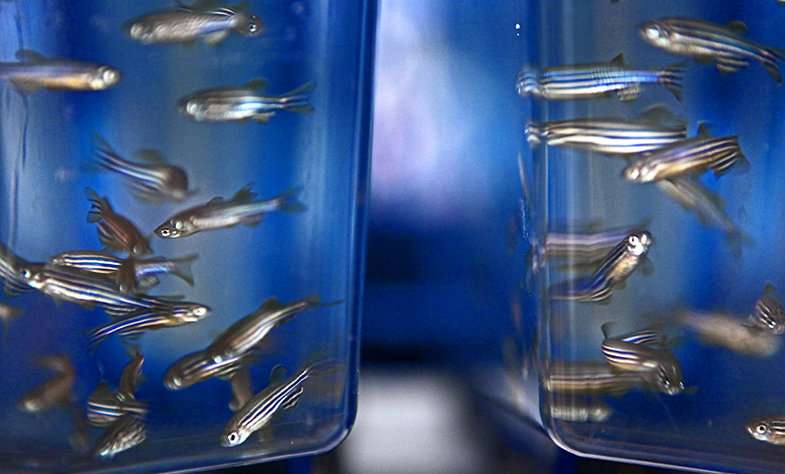Credit: University of Sheffield
A pioneering breakthrough in the way animal research is conducted will help to accelerate studies of the brain.
A team of scientists from the University of Sheffield have developed a new method of studying neurovascular coupling – how the brain regulates its blood supply – using zebrafish.
Neurovascular coupling is an important function and if it goes wrong, it can cause neurodegenerative conditions such as dementia and stroke.
Until now, neurovascular research to measure brain function and blood flow has always been conducted using rodents, which undergo invasive surgery under anaesthetic.
The Sheffield team, led by Professor Tim Chico, Dr. Clare Howarth and Ph.D. student Karishma Chhabria, developed the ground breaking method using the 1-2mm long tadpole-like zebrafish larvae which are nearly transparent. Their transparency allows the observation of brain function and blood flow in a non-invasive and completely painless way.
"Understanding neurovascular coupling is essential if we are going to find new treatments for devastating diseases such as dementia and stroke," said Ms Chhabria from the University of Sheffield's Bateson Centre.
"Animal research plays a vital role in our efforts to remain at the forefront of medicine and science. At the University of Sheffield we take finding alternative models that reduce the need for invasive animal research very seriously.
"We only use animals where no other alternatives are possible and are committed to finding other alternatives. Observing zebrafish is completely painless and non-invasive. This allows a totally new approach for studying brain function."
The Sheffield research group has already used this zebrafish model to discover a drug which reverses the effect of diabetes on brain function, which is hoped will be taken to clinical trial in the future.
Dr. Clare Howarth, Sir Henry Dale Fellow at the University of Sheffield, said: "Our neurones have very little energy reserves so when they are deprived of oxygen – which occurs when someone has a stroke – the neurones can die very quickly and there is no way to bring them back.
"With this new model we were able to observe early biomarkers of when neurovascular coupling goes wrong.
"In the case of our diabetes research we were able to observe the effect of a new treatment reversing the effects of too much glucose.
"The results are really promising and pave the way for further diabetes research in this area using zebrafish."
The research is published in the Journal of Cerebral Blood Flow and Metabolism.
Tim Chico, Professor of Cardiovascular Medicine and Head of the Department of Infection, Immunity and Cardiovascular Disease at the University of Sheffield, said: "Diabetes has quadrupled in the last decades and has major effects on the heart and brain.
"We are excited that we have found a way to reverse the effects of high glucose on brain function which if effective in humans would be a major advance."
More information: Karishma Chhabria et al. The effect of hyperglycemia on neurovascular coupling and cerebrovascular patterning in zebrafish, Journal of Cerebral Blood Flow & Metabolism (2018). DOI: 10.1177/0271678X18810615
Provided by University of Sheffield























